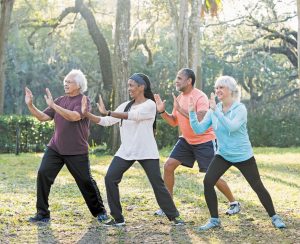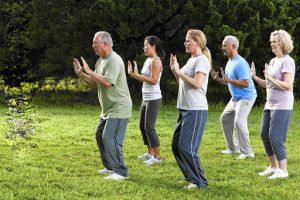Cope Better with Cognitive Dissonance with Mindfulness
By John M. de Castro, Ph.D.
‘Flexing your ability to think about your thinking and practicing brief bouts of daily meditation is good for your health and has an endless list of psychological and physical benefits for your well-being.” – Christopher Bergland
When there is a mismatch between what you say you want and what you do, it is a formula for unhappiness. In psychology it is called cognitive dissonance and it produces an uncomfortable state with a diffuse anxiety. It is psychological conflict resulting from incongruous or conflicting beliefs and attitudes held simultaneously. Cognitive dissonance may increase physiological activation, sympathetic nervous system activity which produces a measurable level of discomfort. To resolve this dissonance and reduce aversive activation, people in a dissonant state change their attitudes.
Mindfulness is known to improve cognition and reduce aversive feelings. It allows the individual to view their thoughts and feelings dispassionately. So, mindfulness may be helpful in resolving cognitive dissonance. In today’s Research News article “Mindfulness is not associated with dissonant attitudes but enhances the ability to cope with them.” (See summary below or view the full text of the study at: https://www.ncbi.nlm.nih.gov/pmc/articles/PMC7146909/),Muschalik and colleagues explore the ability of mindfulness to help resolve cognitive dissonance.
They recruited healthy adults online who ate red meat. They were measured at baseline and one and 3 months later for their attitudes regarding red meat, implicit attitudes (positive or negative) toward red meat, intention to eat less red meat, red meat consumption, and mindfulness. Cognitive dissonance was measured as the difference between the explicit and implicit attitudes toward red meat; the difference between what the participants overtly said and what they covertly felt.
They found that neither mindfulness nor any of its subscales were associated with cognitive dissonance. But the higher the levels of cognitive dissonance the lower the levels of red meat consumption. So, having dissonance produced actions. Mindfulness was not found to moderate this relationship. They found, though that the higher the levels of cognitive dissonance the higher the levels of intention to reduce red meat consumption and this relationship was significantly lower when the participant was high in mindful acceptance without judgment.
These results are interesting but are correlative, so no conclusions about causation can be made. But the results suggest that mindfulness is not related to cognitive dissonance. One can be highly mindful yet maintain different explicit and implicit attitudes. But mindfully accepting things as they are without judgment appear to reduce the relationship between dissonance and intention to act. In other words, mindful acceptance appears to assist in coping with cognitive dissonance, being able to accept the dissonance without judging it interrupts the intention to act on it.
So, cope better with cognitive dissonance with mindfulness.
“Mindful awareness, as we will see, actually involves more than just simply being aware: It involves being aware of aspects of the mind itself. Instead of being on automatic and mindless, mindfulness helps us awaken, and by reflecting on the mind we are enabled to make choices and thus change becomes possible.” – Daniel Siegel
CMCS – Center for Mindfulness and Contemplative Studies
This and other Contemplative Studies posts are also available on Google+ https://plus.google.com/106784388191201299496/posts and on Twitter @MindfulResearch
Study Summary
Muschalik, C., Crutzen, R., Elfeddali, I., & de Vries, H. (2020). Mindfulness is not associated with dissonant attitudes but enhances the ability to cope with them. BMC psychology, 8(1), 32. https://doi.org/10.1186/s40359-020-0377-x
Abstract
Background
Explicit and implicit attitudes have been studied extensively, but there is less attention to reducing dissonance between them. This is relevant because this dissonance (IED) results in distress and has inconsistent effects on behavior, e.g. less physical activity but more smoking. Mindfulness decreases dissonance between self-related explicit and implicit constructs. This study investigates if, and which, specific mindfulness subskills are associated with decreased dissonance between explicit and implicit attitudes, and whether mindfulness subskills moderate the relationship between IED and intention/behavior.
Method
At baseline and one and three months thereafter, participants’ (N = 1476) explicit attitudes, implicit attitudes, red meat consumption (RMC), intention to reduce RMC as well as levels of trait mindfulness were assessed.
Results
Mindfulness subskills were not associated with decreased IED. IED was associated with lower RMC and a higher intention to reduce RMC. The mindfulness subskill acceptance buffered the effect of IED on intention, seemingly offering a skill to deal with dissonant attitudes, which was unidentified until now.
Conclusion
The mindfulness subskill accepting without judgment functions as a way to deal with dissonance. Future research should use this novel finding and investigate whether mindfulness can be used as a buffer in contexts where dissonance results in maladaptive behaviors.
https://www.ncbi.nlm.nih.gov/pmc/articles/PMC7146909/









